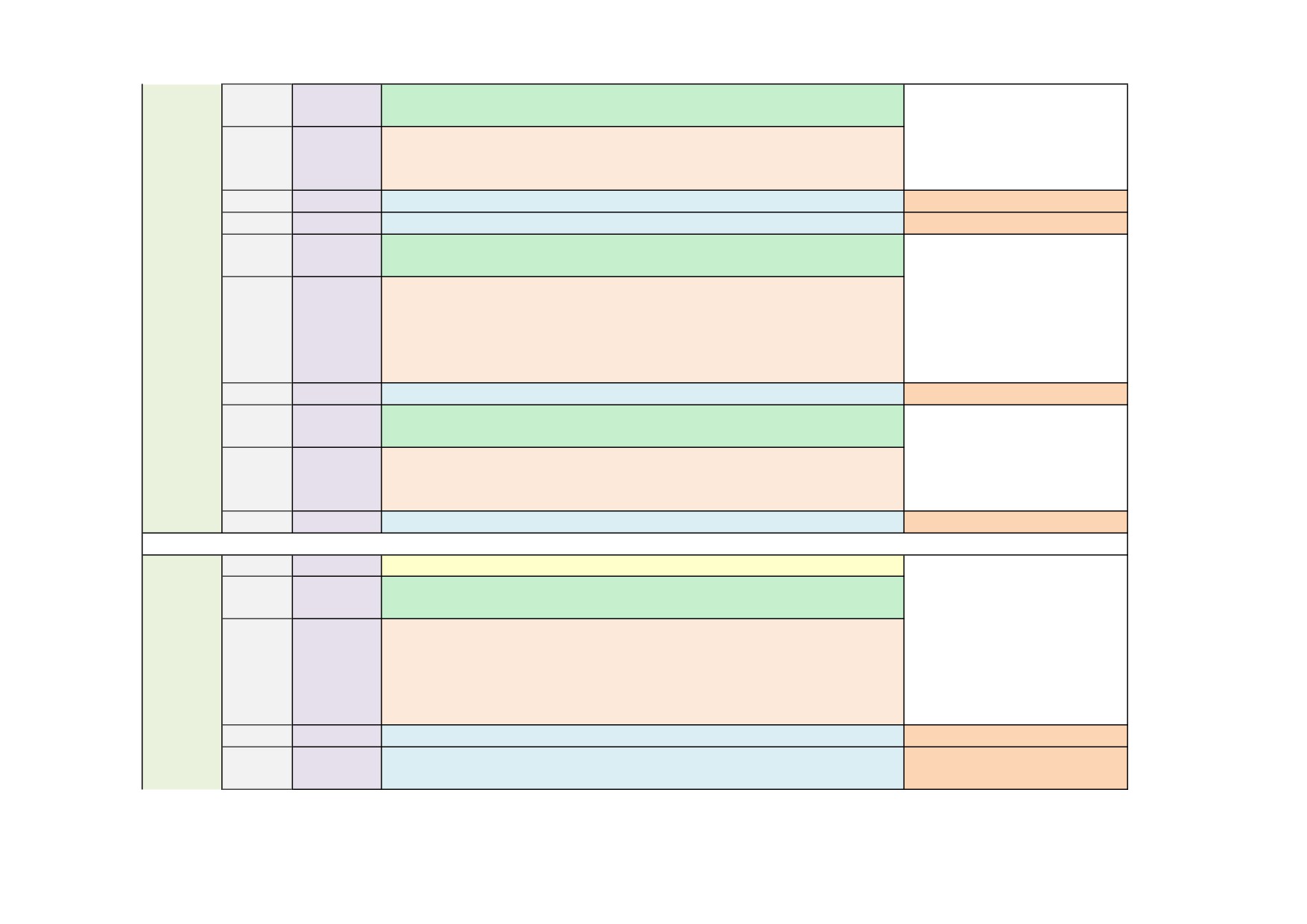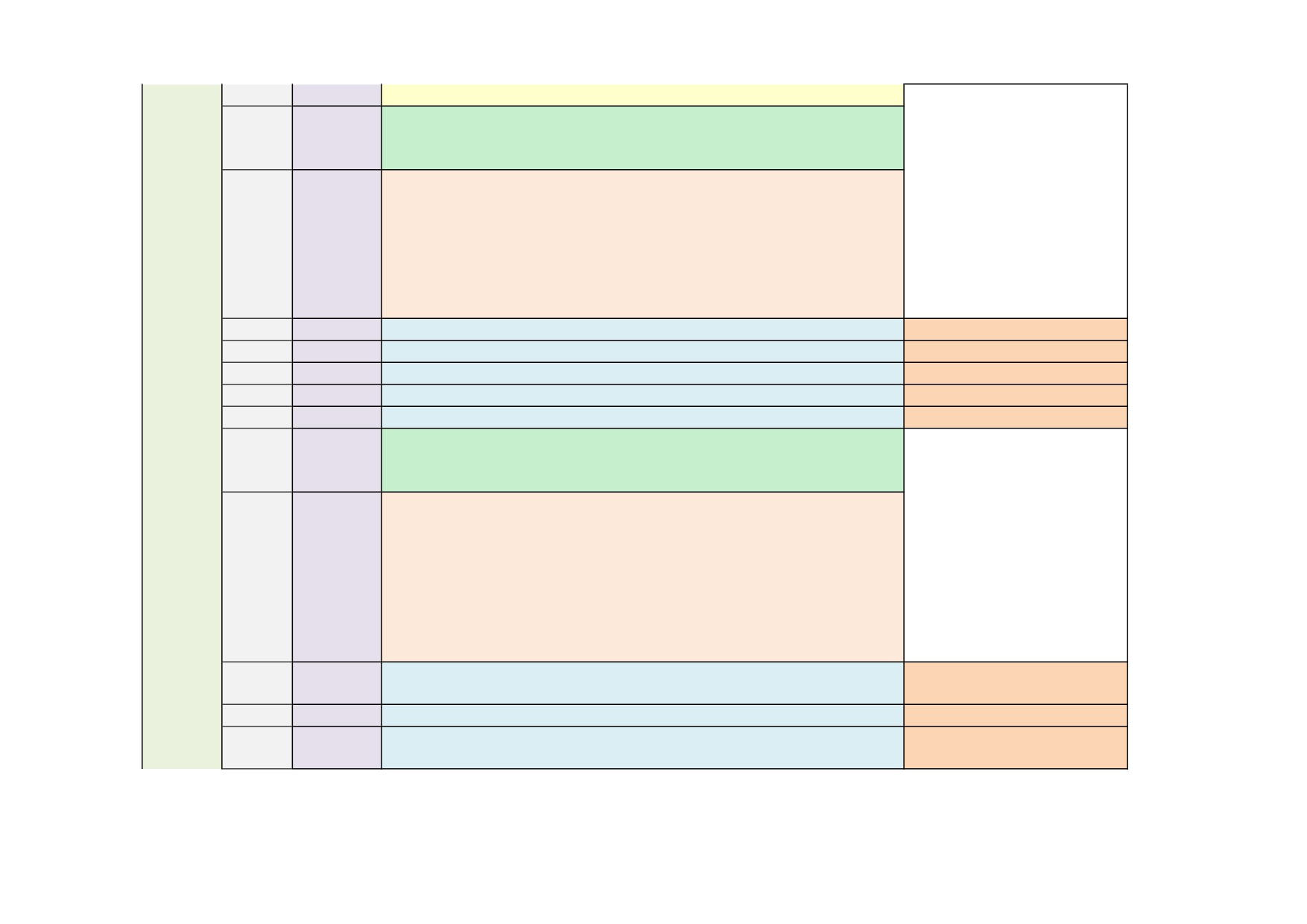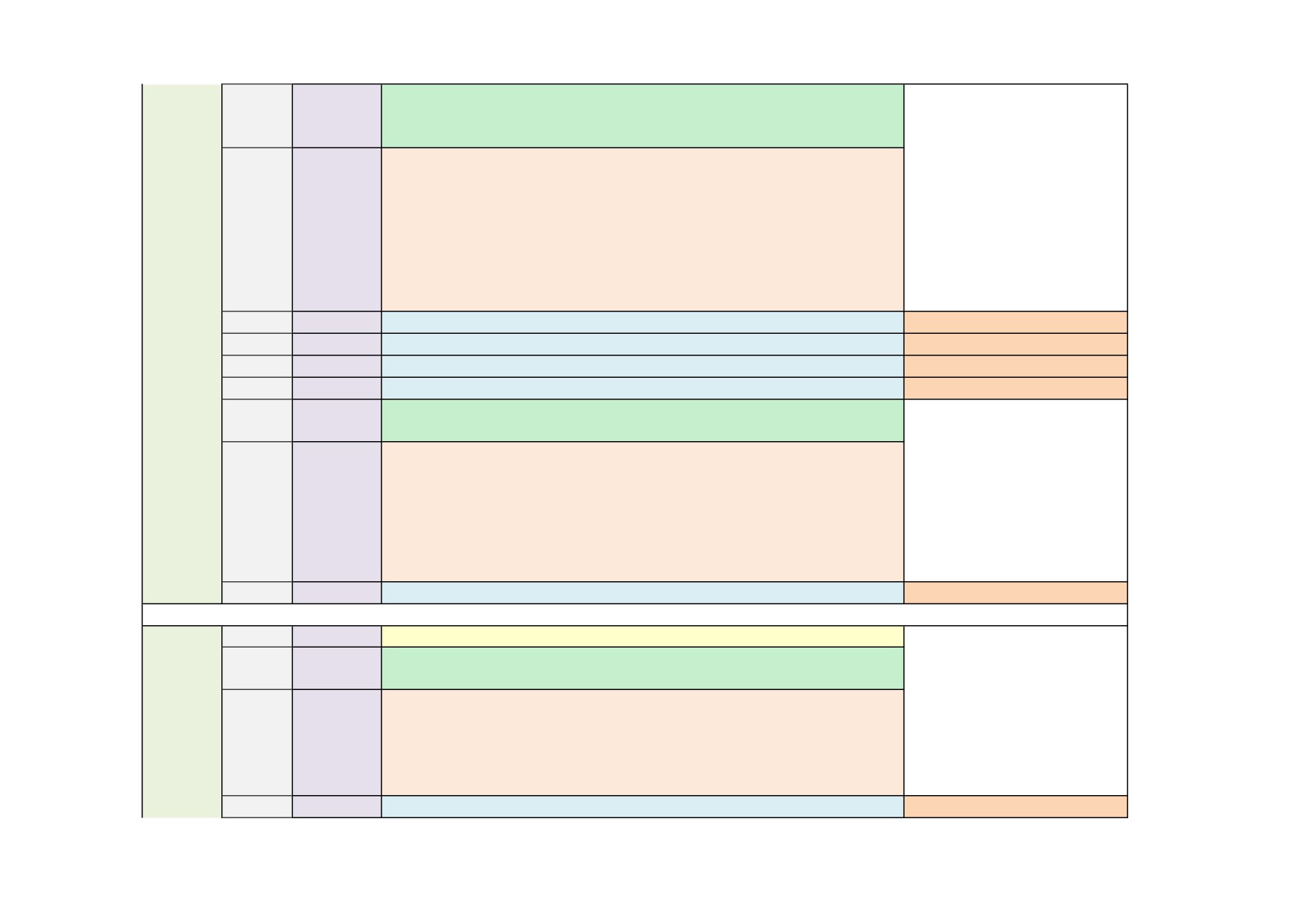CBME Curriculum AMCH
Community Medicine Phase I MBBS Lesson Plan
Topic No.
Lec.No.
Comp. No.
Titles: Topic, Competency with SLO & Lesson
Teaching Methodology
1
Topic
Concept of Health and Disease
CM1.1
Define and describe the concept of Public Health
CM1.1/SLO
1. Define Public Health
2. Discuss the changing concepts of Public Health
1
Introduction to Public Health & Rise of Public Health
Lecture
2
Changing Concepts of Public Health
Lecture
CM1.2
Define health; describe the concept of holistic health including concept of
spiritual health and the relativeness & determinants of health
CM1.2/SLO
1. Define health
2. Describe the dimensions of health
3. Define standard of living, level of living and quality of life
4. Explain physical quality of life index and human development index
5. Explain the determinants of health
3
Dimensions of Health & Concept of wellbeing
Lecture
4
Spectrum of Health & Determinants of Health
Lecture
CM1.3
Describe the characteristics of agent, host and environmental factors in
health and disease and the multi factorial etiology of disease
CM1.3/SLO
1. Draw and explain an epidemiological triad with an example
2. Describe the characteristics of agent, host and environmental factors in
health and disease
5
Epidemiological Triad
Small Group Discussion
CM1.4
Describe and discuss the natural history of disease
CM1.4/SLO
1. Discuss the natural history of disease with an illustration
6
Natural history of disease
Lecture
7
Concept of disease control elimination and eradication
Small Group Discussion
8
Concept of disease monitoring & surveillance
Lecture
CM1.5
Describe the application of interventions at various levels of prevention
CM1.5/SLO
1. Discuss the various levels of prevention with an example for each
2. Define an intervention
3. Enlist the modes of intervention
4. Explain the modes of intervention with an example
9
Levels of prevention and modes of intervention
Small Group Discussion
CM1.6
Describe and discuss the concepts, the principles of Health promotion and
Education, IEC and Behavioral change communication (BCC)
CM1.6/SLO
1. Define health education, IEC, BCC
2. Discuss the principles of health education
3. Describe the models of health education with examples
4. Explain the approaches of health education
5. List the barriers of health education
10
Introduction to health education & principles of health education
Lecture
11
Models of health education & contents of health education
Small Group Discussion
12
Communication process and type of communication
Small Group Discussion
13
Methods in health communication
Self Directed Learning
14
Demonstration of efeectice group discussion
DOAP
15
Demonstration of Role play
DOAP
CM1.7
Enumerate and describe health indicators Health indicators and uses of
indicators
CM1.7/SLO
1. Mention the uses of health indicators
2. List the characteristics of a an indicator
3. Enumerate the health indicators
4. Describe the health indicators
16
Defrinition of health indicators and its various types & uses
Lecture
17
Interpretation of health indicators from various surveys
DOAP
CM1.8
Describe the Demographic profile of India and discuss its impact on health
CM1.8/SLO
1. Describe the Demographic profile of India
2. Discuss the impact of Demographic profile on health
17
Demographic cycle & demographic profile of India
Lecture
19
Demographic indicators
Tutorial
CM1.9
Demonstrate the role of effective Communication skills in health in a
simulated environment
CM1.9/SLO
1. Explain the levels of communication in a doctor-patient relationship
2. Demonstrate effective communication skills in health in a simulated
environment
20
Demonstration of communication skill
DOAP
CM1.10
Demonstrate the important aspects of the doctor patient relationship in a
simulated environment
CM1.10/SLO
1. Demonstrate good doctor patient relationship in a simulated environment
21
Demonstration of effective doctor patient relationship
DOAP
2
Topic
Relationship of social and behavioural to health and disease
CM2.1
Describe the steps and perform clinico socio-cultural and demographic
assessment of the individual, family and community
CM2.1/SLO
1. Describe the steps in clinico socio-cultural and demographic assessment of
the individual, family and community
2. Demonstrate the steps in clinico socio-cultural and demographic
assessment of the individual, family and community
22
Concept of sociology in health
Lecture
Assessment of social cultural demographic profile of the family and the
23
community
DOAP
CM2.2
Describe the socio-cultural factors, family (types), its role in health and
disease & demonstrate in a simulated environment the correct assessment of
socio-economic status
CM2.2/SLO
1. Describe the socio-cultural factors, family (types), its role in health and
disease
2. Demonstrate the socio-cultural factors, family (types), its role in health and
disease in a simulated environment
3. Demonstrate the assessment of socio-economic status correctly in a
simulated environment
24
Socio cultural factors affecting health
Lecture
25
Family types and its role in health and disease
Lecture
CM2.3
Describe and demonstrate in a simulated environment the assessment of
barriers to good health and health seeking behavior
CM2.3/SLO
1. Describe in a simulated environment the assessment of barriers to good
health and health seeking behaviour
2. Demonstrate the assessment of barriers to good health and health seeking
behaviour in a simulated environment
26
Health seeking behaviour of the community and its barrier
Seminar
CM2.4
Describe social psychology, community behaviour and community
relationship and their impact on health and disease
CM2.4/SLO
1. Describe social psychology, community behaviour and community
27
Social psychology and social organization
Seminar
CM2.5
Describe poverty and social security measures and its relationship to health
and disease
CM2.5/SLO
1. Describe the methods to assess poverty
2. Describe the concept of social security
3. Describe the relationship of poverty and social security measures to health
and disease
28
Poverty, social class and social security measures
Small Group Discussion
5
Topic
Nutrition
CM5.1
Describe the common sources of various nutrients and special nutritional
requirements according to age, sex, activity, physiological conditions
CM5.1/SLO
1. Define nutrition
2. Describe the common sources of various nutrients
3. Describe the special nutritional requirements according to age, sex, activity
and physiological conditions
4. Calculate the calorie requirement of an individual based on age, gender
and occupation
29
Classification of food ¯onutrients
Lecture
30
Micronutrients - water soluble vitamins
Self Directed Learning
31
Micronutrients- fat soluble vitamins
Self Directed Learning
32
Recommended daily allowance for various nutrients
Tutorial
33
Balance diet and dietary goals
Small Group Discussion
CM5.2
Describe and demonstrate the correct method of performing a nutritional
assessment of individuals, families and the community by using the
appropriate method
CM5.2/SLO
1. List the methods used for nutritional assessment of individuals, families
and communities
2. Describe different method of performing nutritional assessment of
individuals, families and communities
3. Demonstrate the correct method of performing a nutritional assessment of
individuals, families and communities by using appropriate methods
Nutritional assessment - reference body weight measurement of energy
34
DOAP
35
Assessment of protein
DOAP
Assessment of nutritional status of individual family and the community
36
DOAP
CM5.3
Define and describe common nutrition related health disorders (including
macro-PEM, Micro-iron, Zn, iodine, Vit. A), their control and management
CM5.3/SLO
1. Define nutrition, nutrients, macro nutrients and micro nutrients
2. List the common nutrition related health disorders
3. Define low birth weight, Severe Acute Malnutrition, nutritional anemia.
4. Describe the control and management of nutrition related health disorders
such as PEM, Iron, Zn, iodine and Vitamin A deficiencies
37
Common nutritional problems - malnutrition
Integrated Lecture-Pediatrics
38
Common nutritional problems - vitamin A deficiency
Integrated Lecture-Ophthal
39
Common nutritional problems - nutritional anaemia
Integrated Lecture-Medicine
40
Role of nutrition in non communicable diseases
Self Directed Learning
CM5.8
Describe and discuss the importance and methods of food fortification and
effects of additives and adulteration
CM5.8/SLO
1. Define food fortification, food additives and adulteration of food
2. List some common adulterants
3. Describe the methods of food fortification
4. Discuss the importance of food fortification
5. Discuss the effects of additives and adulteration
41
Food adulteration and PFA Act
Seminar
9
Topic
Demography and vital statistics
CM9.1
Define and describe the principles of Demography, Demographic cycle, Vital
statistics
CM9.1/SLO
1. Define demography
2. Explain the principles of demography
3. Discuss the demographic cycle
4. Enumerate and describe vital statistics
42
Assessment of demographic profile by field survey
CM9.2
Define, calculate and interpret demographic indices including birth rate,
death rate, fertility rates
CM9.2/SLO
1.Define and describe demographic indices including birth rate, death rate,
fertility rates
2. Calculate and interpret the demographic indices including birth rate, death
rate, fertility rates for the given data
43
Interpretation of demographic indicators - field survey
DOAP
44
Fertility indicators
DOAP
45
Factors affecting fertility in India
Small Group Discussion
46
National family health survey
Small Group Discussion
CM9.3
Enumerate and describe the causes of declining sex ratio and its social and
health implications
CM9.3/SLO
1.Define the term sex ratio
47
Define sex ratio and its implications
Lecture
CM9.4
Enumerate and describe the causes and consequences of population
explosion and population dynamics of India.
CM9.4/SLO
1.Describe the terms population explosion and population dynamics
2. Mention the ways of identifying population explosion
3. List the causes of population explosion
4. Enumerate and discuss the consequences of population explosion
5. Explain the population dynamics of India and its implication
48
Population dynamics
Lecture
49
Urbanization and population explosion
Seminar
10
Topic
Reproductive maternal and child health)
CM10.5
Describe Universal Immunization Program; Integrated Management of
Neonatal and Childhood Illness (IMNCI) and other existing Programs.
CM10.5/SLO
1. Enumerate the objectives of Universal Immunization Program
2. Describe the strategies of Universal Immunization Program
3. Discuss the current scenario and challenges of Universal Immunization
Program
4. List the objectives of IMNCI Program
5. Explain the strategies of IMNCI Program
6. Discuss the challenges of IMNCI Program
50
Vaccines & Immunisation
Lecture
CM10.6
Enumerate and describe various family planning methods, their advantages
and shortcomings
CM10.6/SLO
1. Define family planning
2. Describe the scope of family planning
3. Classify the contraceptive methods available to control population
4. Discuss the advantages/disadvantages of each contraceptive methods
51
Family Planning Methods
DOAP
CM10.8
Describe the physiology, clinical management and principles of adolescent
health including ARSH
CM10.8/SLO
1. Describe the physiology of adolescent health
2. Discuss the clinical management and principles of adolescent health
3. List the objectives of ARSH program
4. Explain the strategies of ARSH program
52
Adolescence health
Lecture







